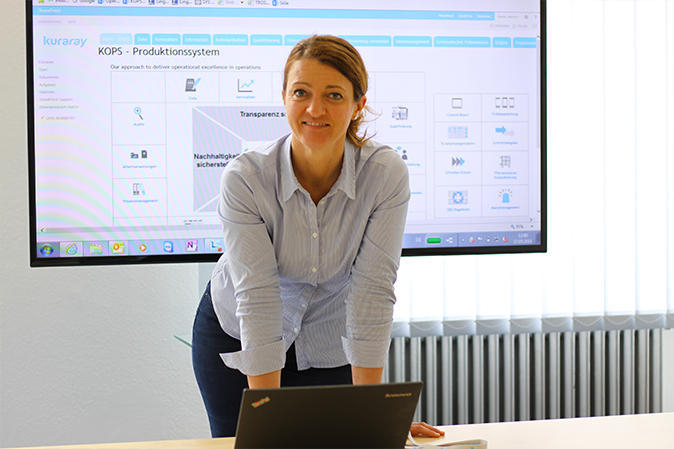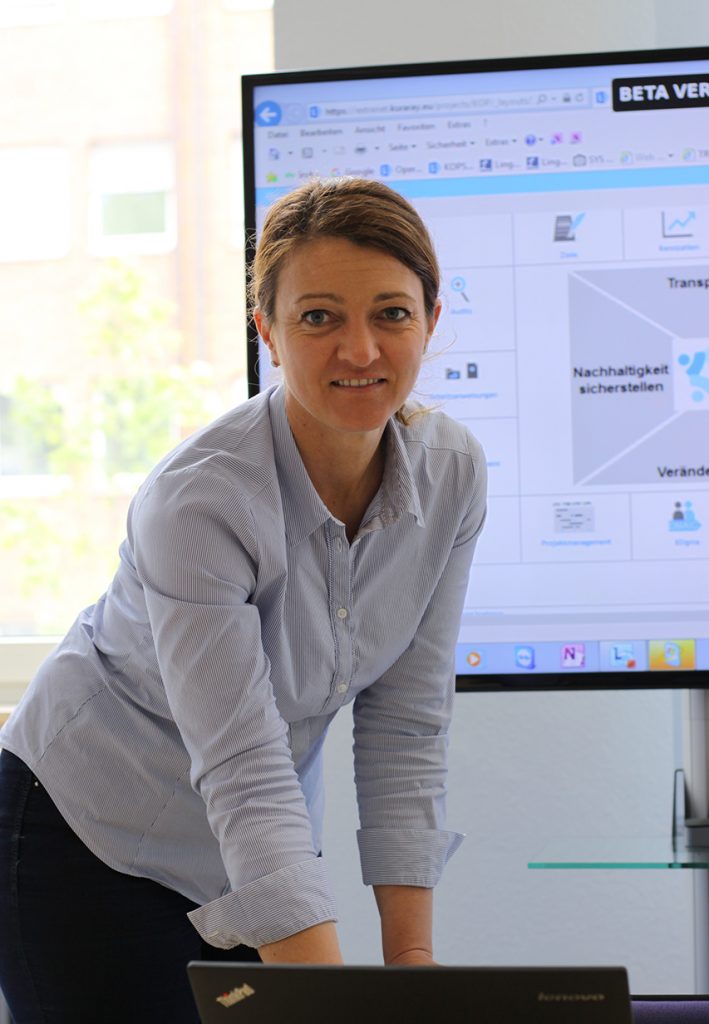
Agility brings success
Markets, customer requirements and business conditions are constantly changing. Properly functioning processes are vital to meet these challenges. In the future, Kuraray will therefore be using modern agile project management methods to ensure fast, flexible and high-quality realization of projects. In this interview, Astrid Geue, Project Coordinator Production Systems, talks about a pilot IT project that successfully used the Scrum agile method as part of the digitalization of production.

Ms. Geue, for some time now, Kuraray has been focusing on digitalizing production processes. Which of the projects were you involved in?
A. Geue: Our project examined how we could introduce simple and sensible links between various IT interfaces used for production at Kuraray. The question was how a platform of this type should be designed to allow data to be transmitted from one system to another.
You managed this project using the Scrum agile method. Can you tell us why?
A. Geue: Scrum is one of the most widely used methods of agile project management. And it was ideal for us because the Scrum approach to project management is especially suitable for complex projects.
In this case, our aim was to find out whether an IIOT would fit into our IT process landscape as a connector and data translator and how we could use it to create value. We didn’t know exactly what that would look like, so we started by developing a vision rather than by defining a specific end-result. At the same time, our project was clearly dominated by a wide range of requirements and interdependencies. Scrum is ideal for that. By contrast, conventional project management is good for projects where the tasks and results are clear from the beginning and there product doesn’t change much during the project.
Could you explain that in more detail? How exactly did the Scrum project management approach work?
A. Geue: First we set up a small, interdisciplinary development team of colleagues from the IT and automation technology areas. My role as project owner was to act as the link between the team and the customer, in this case, our internal clients (the heads of the IT and Operational Business Support departments). We were also supported by an external Scrum Master. The Scrum Master makes sure that all Scrum rules are applied correctly in the process and intervenes if things are not running smoothly. We had a total of six weeks for our Scrum project. During “sprints”, which lasted week each, we drew up a product backlog. That was subsequently used to draft specific activity lists as basis for further sprints. The team was able to set these activities absolutely independently. Every week, there was a sprint review where we presented our results to our stakeholders. That gave the customer an opportunity to give us feedback and to alter priorities where necessary, and was followed by a retrospective, an opportunity to look back over the sprint that had just finished (what went well, what did not, how did we work together as a team, what needs to be improved?).
As a team, we were fully self-managing. Every week, we defined specific times for two regular dailies to synchronize the team and discuss the planning until the next review or daily.
What do you think was the benefit of using the Scrum method?
A. Geue: This agile method made the process very stress-free for us. We all pulled in the same direction and project management using the Scrum method made sure that all upcoming tasks were very transparent. Unlike conventional project management methods, in Scrum projects the team has a great deal of responsibility. That, together with the opportunity to concentrate fully on one project, was very motivating and enabled us to develop a concrete IT target process landscape in a very short time.
Experience with various agile working methods at Kuraray has shown that they help people work faster and more effectively. The methodology can also be of great benefit in product development because the development team works exactly in line with the defined priorities and customer specifications yet can contribute its own ideas and experience to realization of the project. As a result, the demands with the highest priority are realized in very high quality. That makes us fit for the future!
Scrum’s recipe for success
- Shorter time to market as a result of short and regular feedback cycles
Priorities are defined and resources are concentrated on the projects - Encourages a learning organization
- Highly motivated project members who accept responsibility
- High visibility of project progress




